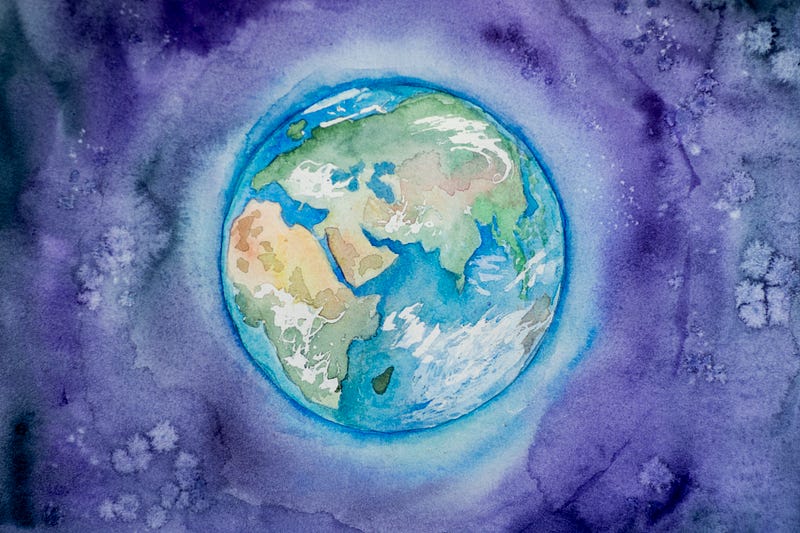# The Risks of Space Exploration: Environmental Concerns and Solutions
Written on
Chapter 1: Understanding Space Exploration and its Implications
As a civil engineer, I firmly believe in the realities of climate change. Throughout my studies in environmental engineering, I've delved into how our actions affect the planet. While some may deny climate change, that does not alter its existence. My curiosity mirrors that of many others, driving me to explore humanity's progress in space exploration.
Since the launch of the first satellite by Russia in 1957, our achievements in space have been remarkable. However, a significant concern arises from the region known as Low Earth Orbit (LEO), which extends from approximately 160 km to 1000 km above Earth. To grasp why individuals like myself are anxious about the prospect of being confined to our planet, we must first understand this orbital zone and its current conditions.
The Low Earth Orbit (LEO)
LEO is characterized by its proximity to Earth, where the gravitational force is strong enough to keep objects in motion around the planet. Objects at the lower end of this orbit can gradually descend back to Earth due to gravitational pull or atmospheric friction, often burning up upon re-entry, creating the shooting stars we sometimes witness.
This orbit is crucial for deploying satellites that facilitate GPS, internet connectivity, and weather predictions, significantly enhancing our daily lives.
The Challenge of Space Debris
In contrast to satellites in the Geostationary Orbit (GEO), which must maintain a specific trajectory along the equator, LEO satellites can travel along various paths. To remain in LEO, they must travel at astonishing speeds of about 28,000 km/h (approximately 8 km/s), which is ten times faster than an average bullet. This extreme velocity means that even tiny objects, like a needle, can inflict severe damage upon collision.
The problem is exacerbated by the size of satellites—many are as large as a school bus—heightening the risk of collisions. When satellites collide, they can break apart, creating numerous fragments that also travel at high speeds. Furthermore, decommissioned satellites often remain in orbit due to cost considerations, adding to the accumulation of space debris.
As of 2021, there were around 6,500 satellites in space, with 3,170 classified as inactive, contributing to the growing issue of space junk. The lack of regulation surrounding space traffic increases the likelihood of accidents that generate even more debris, with estimates suggesting millions of pieces of junk orbiting Earth.
With the current surge in satellite launches—often involving hundreds of satellites per rocket—there is a risk that the number of satellites could swell into the tens or even hundreds of thousands by the decade's end. Without proper oversight, we face a future filled with more accidents and potentially trillions of pieces of debris.
The Dangers of Space Junk
Space debris not only disrupts the functions of active satellites but also creates navigational hazards in orbit. The potential for damage from even a minuscule fragment poses significant challenges to ongoing space exploration efforts, leading to increased costs and reduced efficacy.
NASA scientist Donald Kessler warned of a phenomenon now referred to as the Kessler Syndrome, where the density of satellites and debris could reach a point where collisions become inevitable, resulting in a cascade of incidents that would render many orbits unusable for generations.
Moreover, the environmental consequences of space debris could pose unforeseen challenges, potentially trapping humanity on Earth with limited options for exploration. The presence of a debris field just beyond our atmosphere cannot be ignored.
What Can Be Done?
Addressing these issues requires a concerted effort. While the space industry is exclusive and costly, an increasing number of players are entering the field, raising concerns about maintaining ethical practices amidst fierce competition.
Cleaning Initiatives
We must implement strategies for better traffic management in space, but a critical first step is actively removing defunct satellites and debris. Various agencies are already engaged in cleanup efforts, but these initiatives require more investment to keep pace with the increasing number of satellites.
Space Traffic Management
Significant investments have improved air traffic management, directly impacting safety. A similar approach must be applied to space traffic management, as companies currently monitor their operations primarily to avoid collisions and maximize profits. However, this raises questions about the future of unprofitable research satellites, highlighting the necessity for a comprehensive management system that prioritizes safety over profit.
International Collaboration
Countries and private entities are venturing into space with minimal regulation, leading to unhealthy competition that hampers cooperative cleanup efforts. Without international collaboration, our capacity to address these issues effectively is severely limited, risking further complications in our quest for exploration.
Conclusion
The realm of space exploration has significantly advanced human technology, yet its full potential remains untapped. By fostering a more sustainable approach to Low Earth Orbit activities, we can promote human progress while safeguarding the health of our planet.
Inspired by Jonny Harris, I encourage further exploration of this topic, particularly through visual mediums that elucidate these concerns. His insightful video offers a compelling overview of the issues discussed here and is well worth a watch for those interested in the complexities of space exploration.
